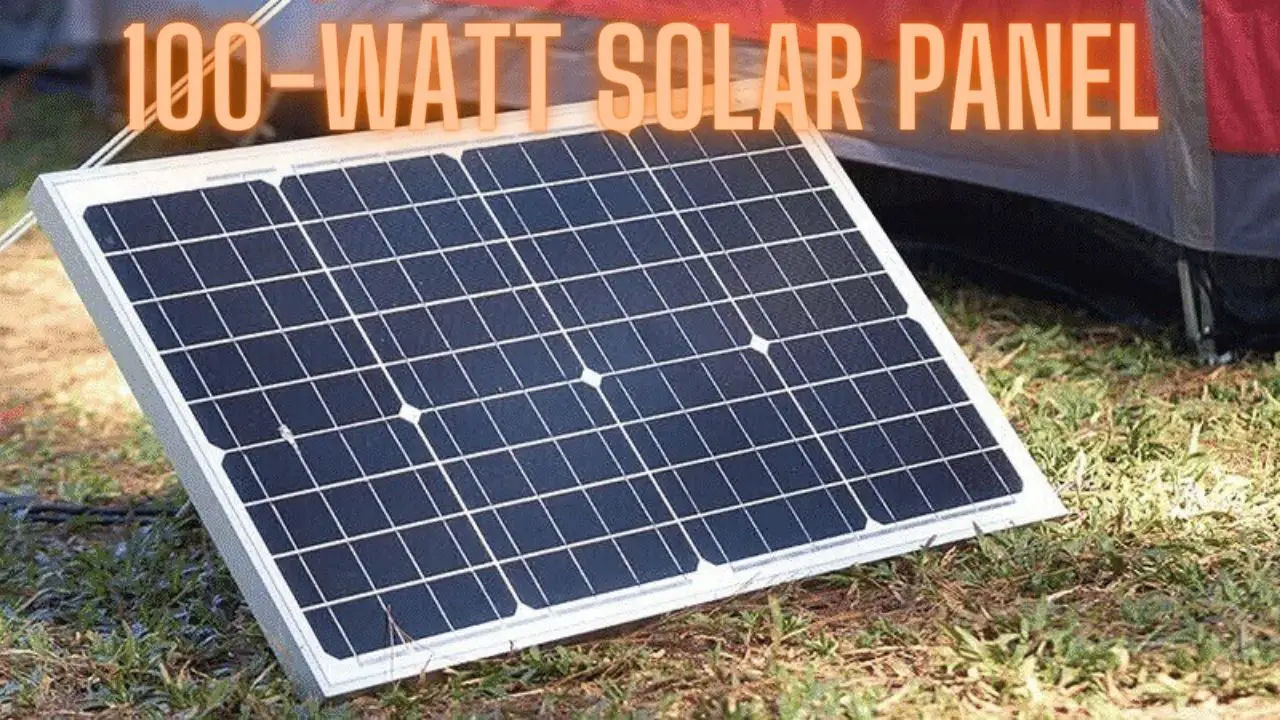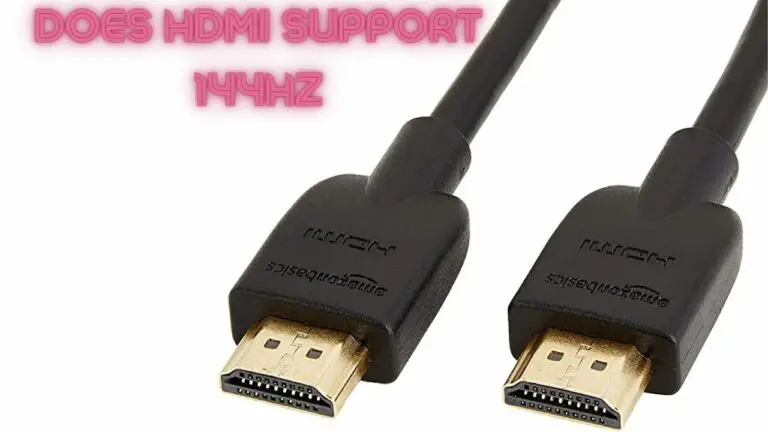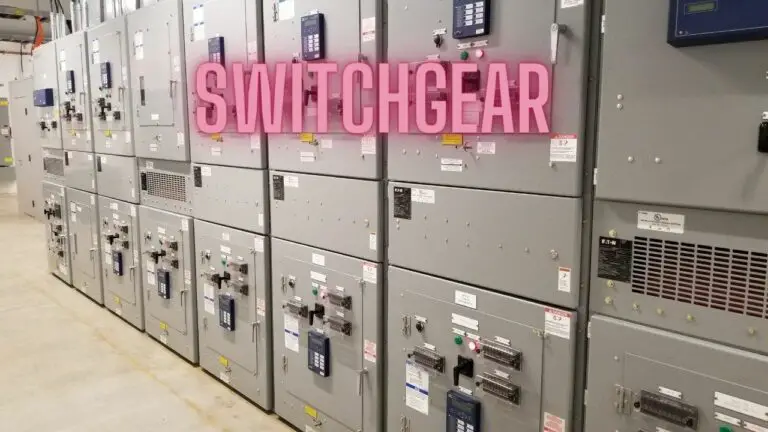What Can a 100-Watt Solar Panel Do? Unlocking the Power of the Sun
Introduction
Solar energy has emerged as a promising and sustainable alternative to traditional fossil fuels for generating electricity. Solar panels, which capture sunlight and convert it into electricity, play a crucial role in harnessing this renewable energy source. Among the various sizes of solar panels available, the 100-watt solar panel is a popular choice due to its versatility, affordability, and portability.
In this guide, we will explore the capabilities and applications of a 100-watt solar panel. From powering small electronic devices to supporting off-grid living and emergency power backup, a 100-watt solar panel offers a range of possibilities for harnessing clean and renewable energy. Whether you’re looking to reduce your carbon footprint, save on energy costs, or prepare for emergencies, understanding what a 100-watt solar panel can do is essential. Let’s delve into the potential uses and benefits of this compact yet powerful solar energy solution.
Power Generation Potential
A 100-watt solar panel has the capacity to generate up to 100 watts of electricity under optimal sunlight conditions. However, it’s important to note that actual power generation can vary based on factors such as sunlight intensity, duration of sunlight exposure, panel orientation, shading, and geographic location.
Here are some key points regarding the power generation potential of a 100-watt solar panel:
- Daily Energy Production: On a sunny day, a 100-watt solar panel can typically produce around 400-600 watt-hours (Wh) of electricity per day, depending on geographical location and weather conditions. This estimate accounts for variations in sunlight intensity throughout the day.
- Seasonal Variations: Solar energy production may vary seasonally due to changes in daylight hours, solar angle, and weather patterns. In summer months with longer daylight hours and higher sun angles, a 100-watt solar panel may produce more electricity compared to winter months with shorter days and lower sun angles.
- Geographical Considerations: The geographical location of the solar panel installation also influences its power generation potential. Regions with abundant sunlight, such as desert areas or locations near the equator, tend to have higher solar energy production compared to areas with frequent cloud cover or limited sunlight.
- Panel Orientation and Tilt: Proper orientation and tilt of the solar panel can optimize sunlight exposure and maximize energy production. In the northern hemisphere, south-facing panels typically receive the highest amount of sunlight throughout the day. Adjusting the tilt angle of the panel according to the latitude of the installation site can further enhance energy harvest.
- Shading Effects: Shading from nearby objects such as trees, buildings, or obstructions can significantly reduce solar panel efficiency by blocking sunlight. It’s essential to place the solar panel in an area with minimal shading to maximize energy production.
Understanding the power generation potential of a 100-watt solar panel helps users estimate its electricity output and plan for various applications, from powering small devices to supporting off-grid living or emergency power backup systems. By harnessing the abundant energy of sunlight, solar panels offer a sustainable and renewable solution for meeting electricity needs.
Charging Small Electronic Devices
One of the most common applications of a 100-watt solar panel is to charge small electronic devices. With its portable and compact design, a 100-watt solar panel can provide a convenient and eco-friendly solution for powering smartphones, tablets, laptops, cameras, GPS devices, portable lights, and other small gadgets, especially in outdoor or off-grid settings.
Here’s how a 100-watt solar panel can be used to charge small electronic devices:
- Portable Solar Chargers: Pairing a 100-watt solar panel with a portable solar charger or power bank enables users to harness solar energy and store it for later use. Portable solar chargers often feature built-in USB ports or DC adapters, allowing direct charging of electronic devices from the solar panel.
- Off-Grid Adventures: Whether camping, hiking, boating, or engaging in other outdoor activities, a 100-watt solar panel can provide a reliable source of power to keep essential electronic devices charged and operational. Simply set up the solar panel in a sunny location and connect your devices for charging.
- Travel and Remote Work: For travelers, digital nomads, or remote workers, a 100-watt solar panel offers a convenient way to stay connected and powered up while on the go. Whether working from a remote location or exploring off-the-grid destinations, solar charging provides peace of mind and independence from traditional power sources.
- Emergency Preparedness: In emergency situations or power outages, a 100-watt solar panel can serve as a lifeline for keeping communication devices charged and functional. Having a solar charging setup as part of an emergency preparedness kit ensures access to critical communication and information resources during emergencies.
- Educational and Recreational Activities: Solar charging with a 100-watt panel can also be incorporated into educational activities or recreational projects. Teaching children about renewable energy and sustainability, powering DIY electronics projects, or setting up solar-powered outdoor events are just a few examples of creative uses for solar energy.
By harnessing the power of sunlight, a 100-watt solar panel offers a versatile and eco-friendly solution for charging small electronic devices. Whether for outdoor adventures, travel, emergency preparedness, or educational purposes, solar charging provides a reliable and sustainable energy source to keep essential gadgets powered up anytime, anywhere.
Running Low-Power Appliances
In addition to charging small electronic devices, a 100-watt solar panel can also power low-power appliances, offering a sustainable and off-grid solution for various household, recreational, or remote applications. While 100 watts may not be sufficient to run high-power appliances such as refrigerators or air conditioners, it can efficiently power a range of low-power devices and appliances, especially when coupled with energy-efficient practices and appliances.
Here are some examples of low-power appliances that can be powered by a 100-watt solar panel:
- LED Lights: LED lighting fixtures consume minimal energy compared to traditional incandescent or fluorescent bulbs. A 100-watt solar panel can easily power a set of LED lights for indoor or outdoor lighting needs, providing illumination in off-grid cabins, RVs, boats, or outdoor spaces.
- DC Fans: Energy-efficient DC fans designed for low power consumption are ideal for cooling small spaces such as cabins, tents, or RVs. A 100-watt solar panel paired with a DC fan can provide continuous airflow and ventilation in off-grid or remote locations, enhancing comfort during hot weather.
- Small Appliances: Many small appliances, such as portable fans, coffee makers, electric blankets, and small kitchen gadgets, have low power requirements and can be operated efficiently with solar power. These appliances can enhance convenience and comfort in off-grid living situations or during outdoor adventures.
- Water Pumps: Low-power water pumps, such as those used for circulating water in ponds, fountains, or irrigation systems, can be powered by a 100-watt solar panel. Solar-powered water pumps offer a sustainable solution for maintaining water features or providing irrigation in remote areas without access to grid electricity.
- Electronics Chargers: Beyond charging small electronic devices, a 100-watt solar panel can also power USB chargers, battery chargers, or DC adapters for various electronic gadgets and accessories. This allows users to keep multiple devices powered and ready for use, even in off-grid environments.
- Communication Devices: Solar power can be used to keep essential communication devices such as radios, walkie-talkies, or satellite phones charged and operational in remote or emergencies. This ensures reliable communication for safety, emergency response, or remote work purposes.
- Small Entertainment Systems: Low-power entertainment devices such as portable radios, Bluetooth speakers, e-readers, or small televisions can be powered by a 100-watt solar panel, providing entertainment options for off-grid living, camping trips, or outdoor gatherings.
By efficiently managing energy consumption and selecting energy-efficient appliances, a 100-watt solar panel can power a variety of low-power devices and appliances, enhancing comfort, convenience, and sustainability in off-grid or remote settings. Additionally, combining solar power with energy storage solutions such as batteries can provide reliable power supply even during periods of low sunlight or at night.
Illuminating Lights
A 100-watt solar panel can efficiently power lighting systems, providing illumination for both indoor and outdoor spaces in various off-grid or remote applications. Solar-powered lighting offers an energy-efficient and sustainable alternative to traditional grid-powered lighting systems, making it suitable for a wide range of residential, commercial, and recreational purposes.
Here’s how a 100-watt solar panel can be used to illuminate lights:
- Outdoor Lighting: Solar-powered outdoor lighting fixtures, such as garden lights, pathway lights, security lights, and landscape lighting, can be powered by a 100-watt solar panel. These lights use energy-efficient LED bulbs and are equipped with built-in solar panels and rechargeable batteries, allowing them to charge during the day and illuminate outdoor spaces at night.
- Indoor Lighting: Solar-powered lighting systems can also be used to illuminate indoor spaces in off-grid cabins, tiny homes, RVs, boats, or remote dwellings. LED light fixtures powered by solar panels provide energy-efficient lighting for living areas, kitchens, bathrooms, and bedrooms, reducing dependence on grid electricity.
- Emergency Lighting: Solar-powered lighting serves as a reliable source of emergency illumination during power outages or emergencies. Solar-powered lanterns, flashlights, or portable light kits equipped with rechargeable batteries can provide essential lighting for safety, navigation, and communication during emergencies.
- Decorative Lighting: Solar-powered decorative lights add ambiance and aesthetics to outdoor spaces such as patios, decks, gardens, and events. Solar string lights, lanterns, and decorative fixtures create a festive atmosphere for parties, weddings, festivals, or special occasions without the need for electrical wiring or grid power.
- Street Lighting: Solar-powered street lights are commonly used for illuminating roads, pathways, parks, parking lots, and public spaces in off-grid or remote locations. These lights incorporate high-efficiency LED fixtures powered by solar panels mounted on top of light poles, providing reliable and sustainable lighting solutions for municipalities and communities.
- Signage and Billboard Lighting: Solar-powered lights can be used to illuminate signs, billboards, advertising displays, and informational boards in outdoor settings where grid power is unavailable or impractical. Solar lighting solutions offer cost-effective and eco-friendly options for enhancing visibility and advertising effectiveness.
- Security Lighting: Solar-powered security lights equipped with motion sensors provide enhanced security and safety for residential, commercial, or industrial properties. These lights activate automatically when motion is detected, deterring trespassing, vandalism, and theft while conserving energy.
By harnessing the power of sunlight, a 100-watt solar panel can effectively power a variety of lighting systems for both practical and decorative purposes. Solar-powered lighting offers numerous benefits, including energy savings, environmental sustainability, and enhanced safety and security, making it a versatile and practical solution for illuminating indoor and outdoor spaces.
Powering Camping or RV Trips
A 100-watt solar panel is an excellent option for powering camping trips or RV adventures, providing a reliable and renewable source of electricity for various appliances and devices while on the road or at remote campsites. Solar power allows campers and RVers to enjoy off-grid living without relying on noisy generators or grid electricity, enhancing convenience, comfort, and sustainability during outdoor adventures.
Here’s how a 100-watt solar panel can power camping or RV trips:
- Charging Batteries: Solar panels can charge deep cycle batteries, which store energy for use during periods of low sunlight or at night. These batteries power essential systems in RVs, such as lights, fans, water pumps, refrigerators, and electronics. A 100-watt solar panel can keep RV batteries topped up, extending boondocking capabilities and reducing the need for generator use.
- Portable Power Stations: Pairing a 100-watt solar panel with a portable power station or solar generator allows campers to have access to AC and DC power for charging electronic devices, running small appliances, powering lights, and other camping essentials. Portable power stations offer a convenient and silent alternative to traditional gas-powered generators, providing clean and quiet energy for camping adventures.
- Off-Grid Camping: For tent camping or off-grid adventures, a 100-watt solar panel can provide a reliable source of electricity for charging smartphones, tablets, cameras, GPS devices, and other electronic gadgets. Portable solar chargers or solar-powered lanterns are lightweight and easy to transport, making them ideal for backpacking, hiking, or wilderness camping trips.
- RV Accessories: Solar power can be used to operate various RV accessories and amenities, including awning lights, ventilation fans, entertainment systems, and portable grills or cooktops. A 100-watt solar panel can help offset energy usage and extend the boondocking capabilities of RVs, allowing travelers to enjoy the freedom and flexibility of off-grid living.
- Campsite Lighting: Solar-powered lights, such as string lights, lanterns, or stake lights, can illuminate campgrounds, picnic areas, or outdoor living spaces without the need for electrical wiring or grid power. Solar lighting creates a cozy and inviting atmosphere for outdoor gatherings, campfires, and evening relaxation.
- Outdoor Recreation: Solar power enhances outdoor recreational activities such as fishing, boating, hiking, and biking by providing a sustainable energy source for powering electronic gadgets, navigation devices, and communication equipment. Solar chargers and power banks ensure that essential devices remain charged and operational during outdoor adventures.
By harnessing the power of sunlight, a 100-watt solar panel offers campers and RVers a clean, silent, and renewable energy solution for powering camping trips and outdoor adventures. Whether charging batteries, running appliances, or illuminating campsites, solar power enhances the camping experience while reducing environmental impact and dependence on fossil fuels.
Supporting Off-Grid Living
A 100-watt solar panel can play a significant role in supporting off-grid living arrangements, providing a sustainable and reliable source of electricity for residential properties located in remote or off-grid areas. Off-grid living, also known as living off the grid, involves relying on self-generated power sources such as solar energy to meet daily electricity needs, rather than connecting to the traditional electric grid.
Here’s how a 100-watt solar panel can support off-grid living:
- Energy Independence: Off-grid residents can achieve energy independence by generating their electricity from solar power. A 100-watt solar panel, when combined with additional panels and energy storage systems such as batteries, inverters, and charge controllers, can provide enough electricity to power essential appliances, lighting, and electronics in off-grid homes or cabins.
- Reduced Utility Costs: Off-grid living eliminates monthly utility bills associated with grid-connected electricity, reducing long-term costs and providing financial savings for homeowners. Solar power allows off-grid residents to generate free and renewable energy from sunlight, reducing dependence on expensive fossil fuels and grid electricity.
- Environmental Sustainability: Off-grid living promotes environmental sustainability by reducing carbon emissions, air pollution, and reliance on non-renewable energy sources. Solar power is a clean and renewable energy solution that helps minimize environmental impact and combat climate change, making off-grid living an eco-friendly lifestyle choice.
- Remote Property Development: A 100-watt solar panel can facilitate the development of remote properties or off-grid homesteads by providing a reliable source of electricity for residential use. Off-grid residents can enjoy the freedom and flexibility of living in secluded or rural areas without the constraints of grid infrastructure or utility services.
- Emergency Preparedness: Off-grid living offers increased resilience and self-sufficiency during emergencies or natural disasters when grid power may be unavailable or unreliable. Solar power provides a dependable backup energy source for powering essential systems such as lighting, communications, refrigeration, and medical equipment, ensuring safety and comfort during emergencies.
- Off-Grid Communities: Off-grid living can foster the development of self-sustaining and environmentally conscious communities that prioritize renewable energy, conservation, and sustainable living practices. Off-grid communities may share resources, collaborate on energy projects, and promote self-sufficiency through solar power, wind power, hydroelectricity, and other renewable energy sources.
By harnessing the power of sunlight, a 100-watt solar panel empowers off-grid residents to live sustainably, independently, and comfortably in remote or rural locations. Solar energy provides a versatile and reliable solution for meeting off-grid electricity needs, supporting a lifestyle that values self-reliance, environmental stewardship, and resilience.
Emergency Power Backup
A 100-watt solar panel can serve as a valuable source of emergency power backup, providing electricity during power outages, natural disasters, or other unexpected events. By harnessing solar energy, homeowners can ensure essential systems and appliances remain operational, enhancing safety, comfort, and convenience during emergencies.
Here’s how a 100-watt solar panel can be used for emergency power backup:
- Charging Batteries: Pairing a 100-watt solar panel with rechargeable batteries allows homeowners to store solar energy for use during emergencies. Deep cycle batteries can be charged during daylight hours and used to power essential systems such as lights, communications devices, medical equipment, and refrigeration during power outages.
- Emergency Lighting: Solar-powered lights equipped with rechargeable batteries offer a reliable source of emergency lighting during blackouts or nighttime emergencies. Solar lanterns, flashlights, and portable light kits provide illumination for navigating darkened spaces, locating emergency supplies, and ensuring safety during power outages.
- Communication Devices: Solar power can keep essential communication devices such as radios, walkie-talkies, or mobile phones charged and operational during emergencies. Solar-powered chargers or portable solar panels allow homeowners to maintain communication with emergency services, family members, and neighbors, even when grid power is unavailable.
- Medical Equipment: Solar power can be used to power essential medical equipment such as CPAP machines, oxygen concentrators, nebulizers, and portable power stations during power outages or medical emergencies. Solar-powered backup systems ensure continuity of care for individuals with medical conditions that require electricity-dependent equipment.
- Refrigeration: Solar-powered refrigerators or freezers equipped with energy-efficient DC compressors offer a reliable solution for preserving food and medications during prolonged power outages. Solar backup systems keep perishable items cold or frozen, preventing spoilage and ensuring food safety during emergencies.
- Water Pumping: Solar-powered water pumps provide access to clean water for drinking, sanitation, and hygiene during emergencies. Off-grid residents can use solar energy to power well pumps, water filtration systems, or backup water storage systems, ensuring access to clean water when municipal water supplies are disrupted.
- Emergency Power Stations: Solar-powered portable power stations or solar generators offer a versatile solution for powering a wide range of devices and appliances during emergencies. These all-in-one backup systems typically include AC outlets, DC ports, USB ports, and built-in inverters for powering lights, electronics, small appliances, and communication devices.
By integrating solar power into emergency preparedness plans, homeowners can enhance resilience, safety, and self-sufficiency during power outages and emergencies. A 100-watt solar panel, combined with energy storage solutions and efficient appliances, provides a sustainable and reliable backup power source that ensures peace of mind and readiness for unexpected events.
Contributing to Renewable Energy Goals
A 100-watt solar panel can play a significant role in contributing to renewable energy goals at both individual and community levels. As part of a broader transition towards clean and sustainable energy sources, solar power offers numerous benefits for reducing carbon emissions, promoting energy independence, and mitigating climate change.
Here’s how a 100-watt solar panel can contribute to renewable energy goals:
- Carbon Emissions Reduction: Solar power generates electricity without emitting greenhouse gases or air pollutants, making it a clean and environmentally friendly alternative to fossil fuels. By harnessing solar energy, homeowners can reduce their carbon footprint and contribute to efforts to combat climate change by displacing emissions from conventional electricity generation.
- Energy Independence: Solar power provides homeowners with a decentralized and self-sufficient energy source that reduces dependence on centralized grid infrastructure and fossil fuel-based electricity. By generating their electricity from solar panels, individuals and communities can achieve greater energy independence and resilience against energy price fluctuations and supply disruptions.
- Diversification of Energy Sources: Incorporating solar power into the energy mix diversifies the sources of electricity generation, enhancing energy security and stability. Solar energy complements other renewable energy sources such as wind power, hydroelectricity, and biomass, contributing to a more resilient and balanced energy system.
- Local Economic Development: The deployment of solar panels stimulates local economic development by creating jobs in the solar industry, including manufacturing, installation, maintenance, and service. As the demand for solar energy grows, businesses and entrepreneurs have opportunities to participate in the expanding solar market, driving innovation and investment in renewable energy technologies.
- Community Solar Initiatives: Community solar projects allow multiple stakeholders to share the benefits of solar energy generation, even if they cannot install solar panels on their properties. By participating in community solar programs, individuals, businesses, and organizations can support the development of renewable energy projects and access clean electricity from shared solar arrays.
- Environmental Stewardship: Solar power promotes environmental stewardship by minimizing environmental impacts associated with conventional energy production, such as air and water pollution, habitat destruction, and resource depletion. By choosing solar energy, individuals and communities demonstrate a commitment to protecting natural resources, ecosystems, and biodiversity.
- Policy Support and Advocacy: Supporting policies and initiatives that promote solar energy adoption, such as renewable energy incentives, net metering programs, and clean energy mandates, can accelerate the transition to a renewable energy future. Advocacy efforts at the local, regional, and national levels can raise awareness, build political support, and drive policy changes that facilitate the expansion of solar power.
By investing in solar panels and adopting clean energy practices, individuals and communities can contribute to renewable energy goals, reduce environmental impacts, and create a more sustainable and resilient energy future. A 100-watt solar panel, when combined with broader efforts to promote renewable energy adoption, represents a tangible step towards achieving a cleaner, greener, and more sustainable energy system for future generations.
FAQS
What is a 100-watt solar panel?
- A 100-watt solar panel is a photovoltaic (PV) module that can generate up to 100 watts of electrical power under ideal conditions when exposed to direct sunlight.
How big is a typical 100-watt solar panel?
- The physical size of a 100-watt solar panel can vary depending on the manufacturer and design, but a standard 100-watt panel is often around 39 x 26 inches (approximately 3.25 x 2.17 feet) in size.
What can I power with a 100-watt solar panel?
- A 100-watt solar panel can power small electronic devices, charge batteries for outdoor lighting, run small appliances, charge e-bike batteries, pump water, and supplement grid power for low-energy devices in homes, cabins, or RVs.
How much electricity can a 100-watt solar panel produce in a day?
- The daily electricity production of a 100-watt solar panel depends on factors such as location, orientation, and weather conditions. On average, it can generate between 400 to 600 watt-hours (0.4 to 0.6 kilowatt-hours) of electricity per day.
Can I run my entire home on a 100-watt solar panel?
- No, a single 100-watt solar panel is not sufficient to power an entire home. It can provide power for small appliances or devices but is typically used as a supplemental energy source rather than the primary power source for a household.
How many 100-watt solar panels do I need for my home?
- The number of 100-watt solar panels needed for a home depends on your energy consumption, location, and available sunlight. To determine your requirements, you may need to perform a solar energy audit and consult with a solar professional. In many cases, homes require multiple kilowatts of solar capacity.
Can I use a 100-watt solar panel to charge an electric vehicle (EV)?
- While a 100-watt solar panel can charge small electronic devices and e-bike batteries, it may not provide sufficient power to charge a typical electric vehicle (EV). Charging an EV usually requires a higher wattage solar panel or multiple panels.
How do I maintain a 100-watt solar panel?
- Solar panels are relatively low-maintenance. To keep them functioning efficiently, periodically clean the surface to remove dirt and debris. Ensure that the panel is not shaded by nearby objects, as shading can significantly reduce its output. Regularly inspect the connections and wiring for any signs of wear or damage.
How long do 100-watt solar panels last?
- Most solar panels come with warranties of 25 years or more. While their efficiency may degrade slightly over time, 100-watt solar panels can continue to produce electricity for decades.
Are there government incentives for installing 100-watt solar panels?
- Government incentives, tax credits, and rebates for solar installations vary by location. It’s advisable to check with local and national authorities to see if there are any incentives available for solar panel installations in your area.
Conclusion: Unlocking Solar Potential
A 100-watt solar panel may seem modest in size, but its applications and benefits are significant. From charging your devices to illuminating outdoor spaces and even supplementing your home’s electricity needs, a 100-watt solar panel can do much more than meet the eye. It’s a gateway to cleaner energy, reduced environmental impact, and greater energy independence. As solar technology continues to advance, we can expect even more possibilities and a brighter future powered by the sun.







